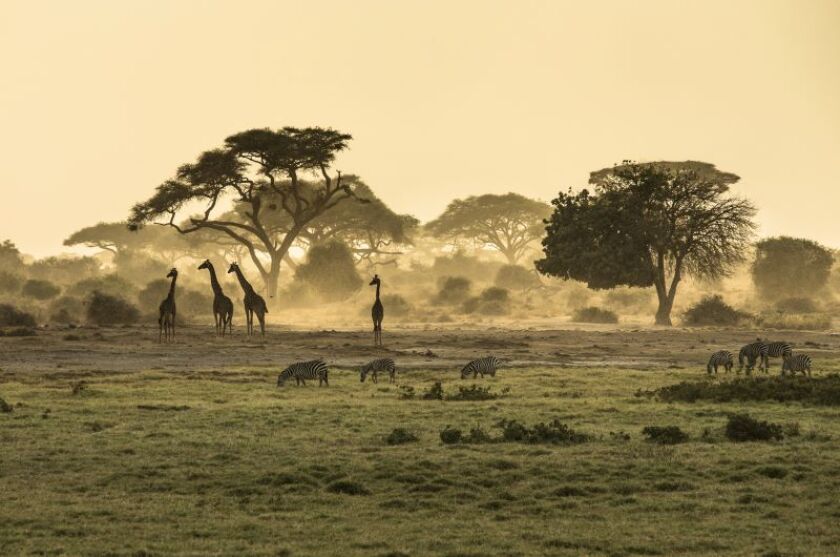The African wilderness and biodiversity are a treasure trove for ESG investment; however, the continent continues to struggle when it comes to mobilising climate related funds. Western nations have largely focused green investments towards projects that lower carbon dioxide (CO2) emissions but with Africa contributing less than 4% of the total CO2 emissions in 2017, climate related investment has a different definition in the continent.
“We are trying to get investors to see beyond traditional renewable energy projects to the broad spectrum of infrastructure projects that are also contributing to climate action,” said Modupe Famakinwa, head of funding at the Africa Finance Corporation. “There are significant needs such as water, road access, and distribution networks for farm produce that are highly neglected.”
Africa is at a different level of industrialisation, which often means that climate related investments can be used to target the grey economy - an area that many in the West may not view as ‘green’.
“What we find is investors tend to have a specific view of what green should look like and if they see a project doesn’t fit into, then it is a bit difficult to get them to invest,” Famakinwa added. “As much as the green economy is important to us there are also a lot of other significant aspect of our economies that we need to focus on in order for us to move forward.”
Climate finance does not mean only green; it means resilience building especially on the infrastructure side, said Ayaan Adam, senior director and chief executive officer at the Africa Finance Corporation.
“A significant amount of climate financing is required to build the climate resilient bridges, roads, seaports, power stations, telecoms towers and the whole physical infrastructure that will last years and withstand the negative impact of climate change.”
See also: Green transition potentially damaging for SMEs
For example, in Cote d’Ivoire, the African Finance Corporation undertook an infrastructure road project that reduced a commute from roughly two hours to 20 minutes. While the project is not immediately noticeable as green, it has resulted in less fuel consumption from reduced traffic.
“We are doing sustainable investing the African way,” said Kome Johnson-Azura, associate vice president, investments at the Africa Finance Corporation.
Structuring and labelling green projects
Getting institutions to understand how a climate related project is structured is another hurdle for attracting funds. “The commercial banks continue to struggle with how best to price these new opportunities because they haven’t been able to fully assess the type of risks they present,” said Johnson-Azura.
Projects are being unlocked through the support of concessional financing,” she added. “One of the most important aspects is having bankable structures relating to things such as: appropriate allocation of risk, patient capital, guarantees, watertight commercial agreements, long tenors etc.”
Unfortunately, corruption and political risk continue to be issues in the continent, creating real concerns of greenwashing for investors. Climate related projects need to look to frameworks such as the ICMA Green Bond Principles and EU taxonomy to label green debt.
“Our first green bond issued last year was based on the ICMA Green Bond Principles,” said Famakinwa. “It gives credibility and confidence to investors that it’s not just green labelling.”
See also: Taxonomy accelerates green market activity
In Nigeria, the Securities and Exchange Commission has put in place guidelines around labelling debt products to ensure they reflected international best practices. “But there is nothing that stands out to me to say that there has been any major regulation put in place to drive ESG in Africa,” said Justine Leigh-Bell, deputy CEO at Climate Bonds.
Gareth Phillips, from the African Development Bank Group, echoed this sentiment. “We’re still dealing with banks that don’t have ESG impact requirements or measurements, but I think it is a very important direction to go.”
Reporting challenges
Part of the issue of properly label green debt products is being able to measure the success of a project. Gathering information beyond just financial results of a green project continues to be a significant challenge.
“There are a lot of projects that may be green, but they don’t have the resources and tools to measure for instance how much CO2 emissions are being reduced or quantifying the number of jobs created,” said Famakinwa.
She continued: “The continent is at the stage where we are developing record keeping and trying to build off on that. This is a salient part of green funding.”
Information gathering has been another significant hurdle towards accessing funds.
“The green climate fund is currently the major source of climate finance. They intend to disburse billions of dollars, but it is widely recognised that accessing those funds is a very demanding process,” said Phillips.
He added: “For example, for adaptation projects they want to see 30 years’ worth of historic data showing the impact of climate change on the project beneficiaries; this is very difficult to do in many cases.”
Weak institutions
Appetite towards mobilising climate related funds can sometimes also be lacking among governments and financial institutions.
“Fundamentally, it’s the weak institutions and infrastructure base for investments that is making it difficult to attract long-term foreign capital,” said Leigh-Bell. “It’s more primed for short-term high-risk capital which is useless for when it comes to infrastructure investments.”
See also: UK’s first sovereign green bond is long overdue
Unfortunately, political instability and corruption continue to plague the continent with the majority of the continent being rated as medium or high risk.
“The kind of stuff we’re talking about here is capital that is low risk and requires a return, so in the absence of being able to provide that security, it is difficult to close the capital in,” she continued.
For the foreseeable future, mobilising climate related funds will be driven by the market. Adam noted that this is something that has to be market led for now. “If we wait for governments, it is going take much longer to take us to where we would like to be,” she concluded.
Click here to read all the chapters from IFLR's Africa Market Makers 2021

